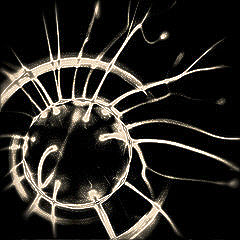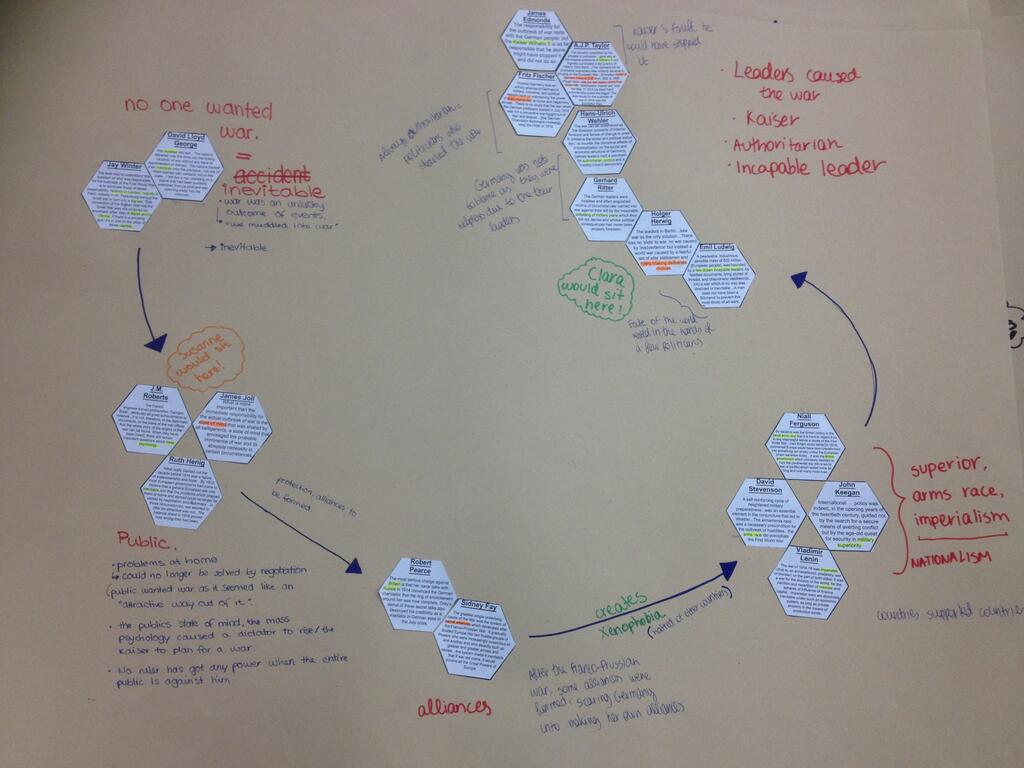Nerve impulses.
 Neurones can propagate impulses down the axon at speeds over 300 km/h, as fast as a Bullet train. To reach this speed the impulse travels by saltatory conduction. A quick review of resting potential and action potential is followed by a SOLO card sorting activity where students arrange information to explain the cell processes leading to resting potential and then action potential. A third activity uses some interesting web links to illustrate saltatory conduction, and how the lack of myelin sheath results in weaker, slower nerve impulses and disease.
Neurones can propagate impulses down the axon at speeds over 300 km/h, as fast as a Bullet train. To reach this speed the impulse travels by saltatory conduction. A quick review of resting potential and action potential is followed by a SOLO card sorting activity where students arrange information to explain the cell processes leading to resting potential and then action potential. A third activity uses some interesting web links to illustrate saltatory conduction, and how the lack of myelin sheath results in weaker, slower nerve impulses and disease.Lesson Description
Guiding Questions
Name three different roles of integral proteins in cell membranes.
Can you think of two examples of molecules which have an electrical charge?
How could an integral protein in a neurone plasma membrane cause a different number of charged molecules in the cytoplasm on the inside of a neurone compared to the fluid outside the membrane (an electrical potential across the membrane).
Activity 1 - Review of the details of nerve impulses
Review the ![]() introductory slides about the structure of neurones and the role of membrane proteins in nerve impulses.
introductory slides about the structure of neurones and the role of membrane proteins in nerve impulses.
Watch the ![]() Animation of resting potential and nerve impulses on this McGraw Hill page.
Animation of resting potential and nerve impulses on this McGraw Hill page.
For more explanation watch the following YouTube animations which summarise the details of
- resting potential and
- action potential.
![]() 3D Animation of the molecular mechanism of nerve impulses
3D Animation of the molecular mechanism of nerve impulses
![]() A good simple diagrammatic explanation of resting potential
A good simple diagrammatic explanation of resting potential
Activity 2 - SOLO Hexagon activity
Using the ![]() Nerve impulse SOLO hexagon cards below - sort the short explanation into those which describe the establishment of resting potential, and those which explain the action potential and the propagation of an impulse.
Nerve impulse SOLO hexagon cards below - sort the short explanation into those which describe the establishment of resting potential, and those which explain the action potential and the propagation of an impulse.
Then arrange the hexagons into a logical order for the explanation.
Share ideas and record explanations
 Students explain their diagrams to a partner, to check the sequence.
Students explain their diagrams to a partner, to check the sequence.
This explanation can be recorded by the students.
Options include:
- Stick the hexagons on paper and write notes around them.
- Video each other as they give the explanation.
- Take photographs and build a PowerPoint presentation / or worksheet.
Activity 3 - Myelin Sheath cells and saltatory conduction of nerve impulses
Saltatory conduction, (the nature of an impulse jumping from node of Ranvier to node of Ranvier) increases the speed of the impulse by up to 30 times and it reduces the number of ions which move through the membrane making the process more efficient, saving energy.
![]() slides on saltatory conduction
slides on saltatory conduction
Na+ and K+ channels are not evenly spaced along a myelinated axon. Instead, they are found in groups at places where the axon is not covered by myelin sheath, called the nodes of Ranvier. In a myelinated axon the impulse travels faster because the depolarization of the axon at one node leads to depolarization at the next node by conduction within the axon. The depolarization “jumps” from one node to another; which is called saltatory conduction.
Further reading - multiple sclerosis
The links below make interesting reading, they contain further details about nerve impulses and an example of multiple sclerosis, a disease where the immune system attacks myelin sheath cells. This gives a real world example of why we need knowledge of nerve impulses and revision of the immune response mechanism of lymphocytes.
Optional question:
......................................................................................................................................................................
......................................................................................................................................................................
......................................................................................................................................................................
Teachers notes
I like to begin by revising the structure of cell membranes and the presence of integral proteins in the plasma membrane of the axon of a neurone. Some students may need guidance to realise that the protein pumps and channels are present in the whole length of the neurone plasma membrane.
This is also a good moment to remind students of the functions of membrane proteins, because there are protein channels and protein pumps in this lesson, and also receptor molecules in the lesson on synapses.
Activity 1 includes some simple diagrams showing a neurone, and the location of protein pumps, and protein channels. These are deliberately left without too many annotations so they can be used in a variety of ways, projected or worksheets to annotate.
Students who don't do chemistry need reminding that potassium (K+) ions and sodium ions (Na+) are positively charged and they are often confused by the resting potential being negative. This can be explained by the presence of negative ions in the cytoplasm of the membrane and outside the cell, for example chloride ions (Cl-).
Activity 2 is a SOLO hexagons card sort. Students can begin by dividing the cards into two groups and then into a logical sequence. Some students may begin by simply explaining what is written on each card. These represent the first three levels in the SOLO hierarchy. For more information try this SOLO blog post by Pam Hook.
Activity 3 is an introduction to saltatory conduction in neurones. The slides are designed to help explanations in this new area of the IB guide.
The further reading gives the work on neurone structure and the importance of myelin sheath some context in a disease which affects about 1 in 10000 people in Europe.
A future idea
It would be nice to turn this lesson round and begin with the problem based task of understanding multiple sclerosis, and give students resources to do so which engage them in learning about neurone structure, impulses, and saltatory conduction. It would undoubtedly also link to the body's immune system and auto-immune disease too further deepening links in the activity.

 IB Docs (2) Team
IB Docs (2) Team
